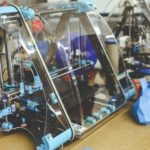The Defense Advanced Research Projects Agency (DARPA) has demonstrated how programmed UAVs can continue to share information and execute a mission autonomously. This could be advantageous in scenarios where communication links with human controllers are blocked or lost.
The test series took place at Yuma Proving Ground in Arizona, as part of DARPA’s Collaborative Operations in Denied Environment (CODE) programme.
The air vehicles initially operated with supervisory mission commander interaction. When communications were degraded or denied, CODE vehicles retained mission plan intent to accomplish mission objectives without live human direction.
DARPA says the CODE-equipped Unmanned Aerial Systems (UASs) were able to adapt and respond to unexpected threats in an anti-access area denial (A2AD) environment. They efficiently shared information, co-operatively planned and allocated mission objectives, made co-ordinated tactical decisions, and collaboratively reacted to a dynamic, high-threat environment with minimal communication.
A DARPA statement said: “The ability for CODE-enabled vehicles to interact when communications are degraded is an important step toward the programme goal to conduct dynamic, long-distance engagements of highly mobile ground and maritime targets in contested or denied battlespace.”
Scott Wierzbanowski, DARPA programme manager for CODE, commented: “The test series expanded on previously demonstrated approaches to low-bandwidth collaborative sensing and on-board planning. It demonstrated the ability to operate in more challenging scenarios, where both communications and GPS navigation were denied for extended periods.”
He added: “The demonstrated behaviours are the building blocks for an autonomous team that can collaborate and adjust to mission requirements and a changing environment.”
Infrastructure
The DARPA team has also advanced the infrastructure necessary to support further development, integration and testing of CODE as it transitions to future autonomous systems.
Achievements include incorporation of third-party autonomy algorithms into the current software build, the creation of a government repository and lab test environment for the CODE algorithms, and the successful demonstration of the Johns Hopkins University Applied Physics Laboratory White Force Network capability to provide constructive threats and effects in an LVC test environment.
The CODE programme is expected to conclude in spring 2019, followed by full transition of the CODE software repository to Naval Air Systems Command.
Image: CODE artist’s concept

